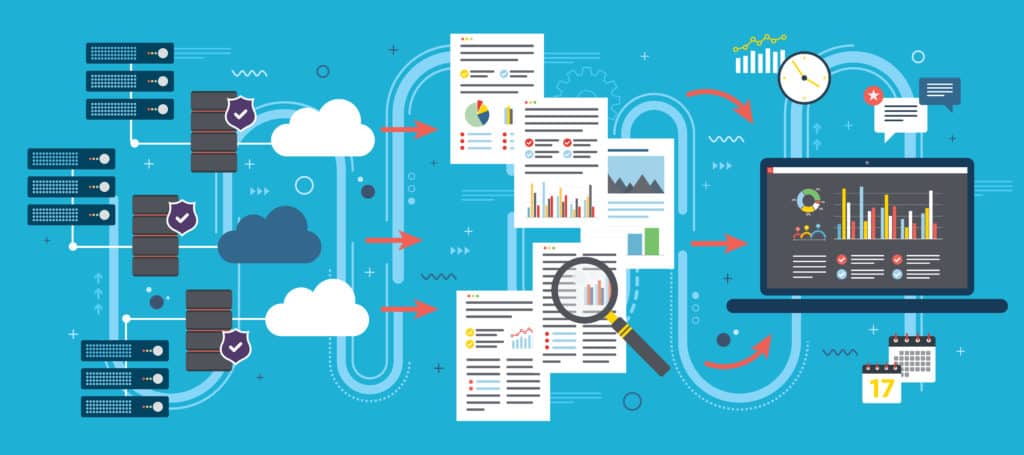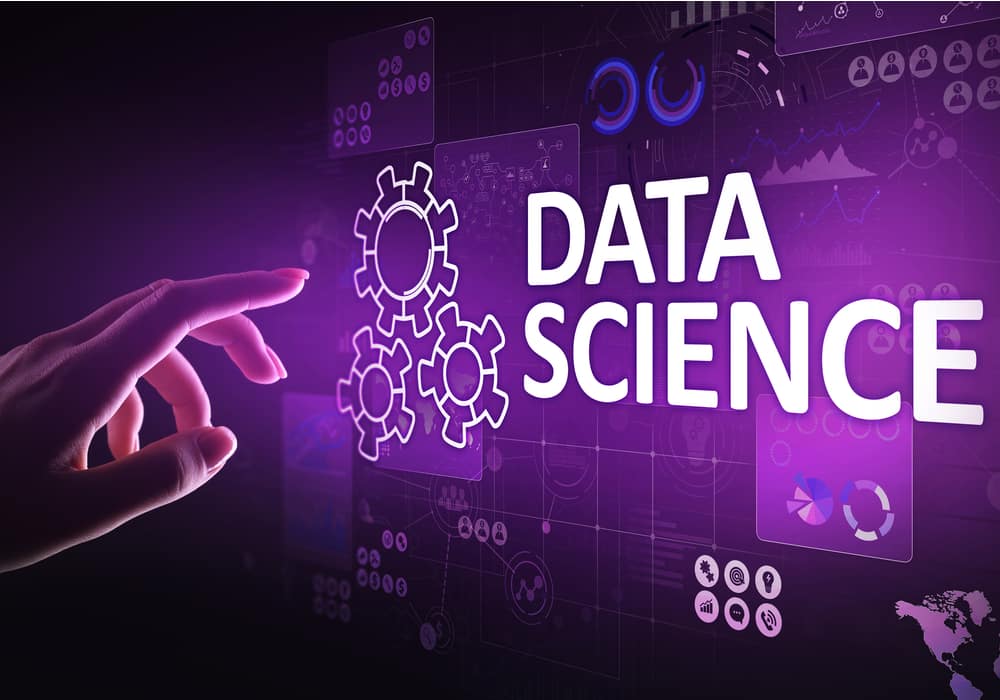Introduction to Data Mining
The world today runs on data but the question remains: How are we sourcing this data? The answer to it is not very simple. Data is often extracted from several sources and then crunched into useful numbers which are then used by companies to make any particular decision. Data Mining refers to the set of techniques and methods which involve the use of multiple software for the extraction and finding of suitable data points.
This involves a lot of research and brainstorming as suitable information has to be mined out of several sources. Data mining is not limited to finding out the sources of data. It majorly involves analyzing the existing databases for new insights as a particular sample set of data can give out a lot of new perspectives of looking at it. Data mining makes use of various statistics principles to trace the relationship between any two given data points. Also, in today’s era, it uses tools like machine learning and artificial intelligence to find out various patterns and trends which become difficult to do manually.
What can be Achieved with Data Mining?
Data mining involves scrutinizing of raw data. This raw data can be anything like the price of a particular commodity at a particular point of time, the data on competitors, data on consumption pattern of a particular market segment, data on what marketing strategies have worked out well in a particular industry, etc. Data mining is also used for making business forecasts and predicting the uncertainties which envelop various business entities working in different sectors.
Also, the trend analysis is one of the major benefits of data mining as these give out patterns which help in analyzing the data faster and better and also gives powerful insights for a better understanding of the consumer base and their behavior such as the purchasing pattern, the kind of goods in which the consumer likes to spend, consumption patterns, frequency of purchases made by the customer, etc. thus leading to a productive and curated strategy to be taken to handle a particular market.

Also, with data mining, various hidden facts can be brought to the attention which will help the business in a lot of ways. For example: If a company is looking forward to entering a particular market segment, it would need a lot of information such as the size of the market, the size of the market which the company can tap, demand for that particular product in a particular area, etc. All this can be found out by hitting the eye and mining the correct and the most relevant data sources.
With the help of data mining, you avoid ambiguity and analyze data to extract information which is relevant to a particular business. With data mining, the operational costs can be brought done to a huge extent and with various automated tools available to mine data, the manpower cost has gone down drastically.
Also Read: Data Mining Projects
Data Mining Techniques
- Statistics: Statistics deal with the collection and segmentation of data. Here, the quantitative aspect of data is being taken care of. This is an old technique that makes the trend analysis easy. Statistics bring various measures into the picture like regression, correlation, etc.
- Clustering: Clustering of data is one of the most primitive and important steps in mining data. By this technique, the data is segregated into similar chunks and is divided into various segments which are then analyzed independently and also compared to the other segments thus formed.
- Visualization: The visualization of data is a very important aspect of data mining. You can mine a lot of information from a given set of data but it is of no use when the person for whom the information is meant for is unable to understand it. It sanitizes the data and converts it into an understandable form that serves the purpose of data mining.
- Decision Tree: Here, the data is arranged in the form of a tree showing the hierarchal and chronological relevance of different sets of data. Each branch of the tree is a classification and the data which supports the classification. This makes it easier for the user to make decisions and predictions.
- Association: This technique aims at finding various links between two different sets of data or between various classifications made in the same data set. It establishes a relationship between various variables thus extracting valuable information for analysis and implementation.
- Neural Networks: This is a basic foundation step which is automated. The user does not have to put in a lot of effort into the mining of data using neural networks. It is easy to use.
- Classification: This is one of the most popular techniques used in mining data. Here, there are predefined classifications and models which classify a big set of data. It also brings in the element of other techniques which makes the data mining process a lot easier.
To understand a detailed guide on data mining techniques, check out our blog: Data Mining Tutorial – A Complete Guide.
Top 10 Free Data Mining Tools for 2022
- Rapid Miner
- Orange
- Weka
- Sisense
- Revolution
- Qlik
- SAS Data Mining
- Teradata
- InetSoft
- Dundas
Check out the most popular free data mining tools
- Rapid Miner: So far, this is one of the best tools which uses data to forecast various information. This tool takes up the JAVA language for receiving instructions and is a very insightful tool for predictive analysis. This tool can be used for a lot of functions like training, business applications, etc.
This tool makes use of flow-based programming which makes data visualization much easier. It has tools for statistical analysis which are easy to use. Also, one does not need extensive knowledge of coding before using this product.
The no coding concept makes it difficult for programmers to comprehend the data. Also, getting a license for this tool can be an expensive affair for small business concerns. The use of Rapid Miner is limited to a particular set of modules.
2. Orange: It is a machine learning software that is component-based and makes data visualization a lot easier. It provides various widgets which analyzes the data and then make it ready for visualization. It has a user engagement platform which is both fun and easy to use.
Orange is an open-source data mining platform that can work with both scripts and with ETL workflow. This is one of the simplest tools to operate as it is programmed in Python language which is easier to learn compared to the other programming languages. Also, Orange provides a better classification and segregation of data which makes data mining easy.
Orange has an exhaustive list of machine learning algorithms which makes it a little less versatile and dynamic. Also, the statistical analysis of data becomes a challenge while using Orange. It has a very limited range of reporting capabilities
3. Weka: This machine learning software is one of the best tools for analyzing data. This tool also aids in predictive modeling and data visualization. This too is written in the JAVA programming language. It can also provide access to various SQL databases which can be analyzed further.
It is an open-source tool that is free for use. This tool is mostly used for developing new machine learning algorithms and can support data files from multiple sources.
There is an issue with the proper documentation of files which are analyzed. It lacks connectivity with Excel sheets and the non-Java databases. Also, the optimization of parameters poses a huge challenge.
4. Sisense: It is one of the best artificial intelligence and data aggregation platform. It caters to the needs of different organizations based on the size of the company, the sector in which the company operates, etc. It further combines data from multiple sources and saves it for later use. It also generates visual reports which make the understanding even easier.
Science has the option of working on-premise and it also has a cloud-based option which makes working easier at all times. It is the best application when the database is quite huge. Also, a user can take snapshots of various data points using the Sisense Elasticube.
The Elasticube feature of the tool is not quite user-friendly. Also, the application works only when you are connected to the internet. Also, the tool is quite heavy which takes in a lot of time. The costs associated with the application is variable, thus making it an expensive option.
5. Revolution: Commonly known as R, this tool provides an interactive platform for statistical operations and data visualization. It is designed in a way that makes it quite user-friendly. It mines the data quite easily. Also, one could perform quite intricate statistical calculations.
It makes use of several statistical functions to analyze the data. Also, it makes the heavy programming quite concise and less cumbersome. It has really good graphics features and elements.
This tool is good at analysis but not that good with data mining. Also, you need to have an extensive knowledge of any array language to work with this tool.
6. Qlik: One of the most widely used Business Intelligence tools, Qlik has a easy to use data mining and visualisation platform. This tool allows users to fetch, integrate, process and analyse data from multiple sources.
Qlik has an interactive data visualisation platform that includes drag-and-drop features. It also has a highly responsive, making changes instant. It can integrate data from multiple sources and ensure top quality data security. Qlik also includes sharing options, so that you can share your analytical reports easily. The analysis mode might use excessive memory space at times, resulting in a slow process. Some users have faced issues regarding data load editor, OBDC connections, exportations, scripts’s debug mode at times.
7. SAS Data Mining: SAS data mining can be used for descriptive and predictive modelling. This tool is especially helpful for developing models quickly, understanding key relations and identifying patterns for streamlining the data mining process. This tool is best suited for text mining and optimisation. It also comes with distributed memory processing architecture that can be scaled up to fit business goals.
8. Teradata: Teradata offers a blend of tools, technologies and expertise that can optimise data mining. Users can integrate this tool into their existing systems and use data from varied sources. This tool is especially beneficial for organisations which have migrated or are migrating to the cloud. Additionally, it supports SQL and provides extensions for data tables. Users can even distribute the data to the discs without much manual intervention.
9. InetSoft: Inetsoft’s data mining tool helps users to transform data into uniform data points to aid the analysing process even if it has been sourced variously. This tool can quickly transform data from both structured and unstructured sources . Users can optimise their own apps for updating and data consumption through Inetsoft’s on-premise applications. It also allows users to share paginated reports with parameterisation and the corresponding business logic.
10. Dundas: If you are looking for an enterprise-level data mining tool, Dundas could be the perfect fit for you. Dundas can be used for building interactive dashboards, reports and more which can be used at scale. Companies often use it as the central data portal which all the employees can access. Users can customise data visualisation to suit their business requirement. It features smart drag and drop templates and also includes visualisation maps.
Data mining has come a long way, evolving at every step. With various tools already in the market and various other tools which are constantly being added up in the list. Data handling and extracting of information was never this easy.
To learn more about how data mining is used in data science, visit the data science course page by Great Learning.
Must Read
Difference Between Data Warehousing and Data Mining








